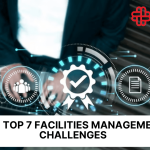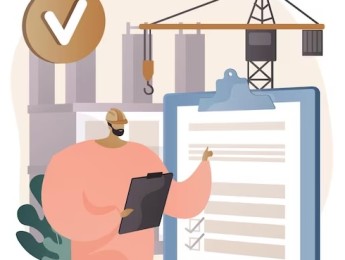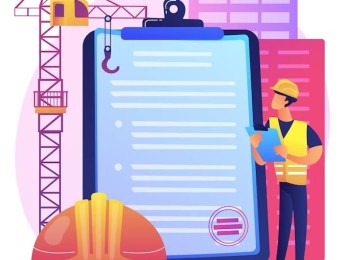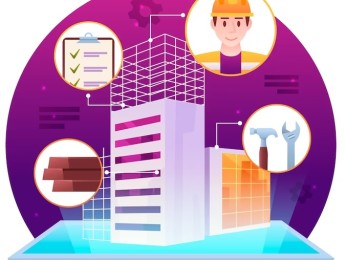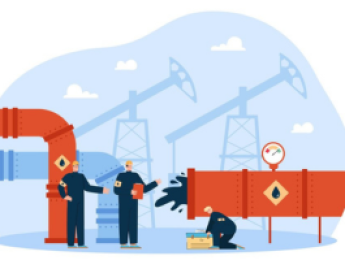Building management is crucial in ensuring a building is habitable. It focuses on individual features and facilities, their proficiency, and how they work alongside other functions. Everything within a building must be well-designed, accessible, and compliant with health and safety procedures.
Building management encompasses various areas of building design and function. The design of facilities within a building is essential to ensure they can be accessed by the necessary individuals, within a reasonable budget for the business, and meet all safety standards. To ensure client satisfaction, the facilities must be designed to meet the client’s needs best and be practically achievable in the discussed timeframe.
Effective risk management is an essential factor in building management. Risk assessments should be regularly conducted to identify risks throughout the design, building, and post-installation process. These risks must be analysed, and adequate preventative and corrective actions should be in place to reduce the negative impact on life and the building if they were to occur.
Upon completion of this course, participants will be able to:
- Understand the importance of building management services.
- Identify what processes and features are included within building management.
- Maintain high levels of health and safety and ensure all building features and functions are fully compliant with health and safety regulations.
- Establish effective risk management and conduct regular risk assessments.
- Ensure all building services meet the needs of occupants.
- Utilise various building management methods and systems to control all areas of the building and monitor effectiveness.
- Explain the consequences of poor building management on both the occupants and the organisation.
This course is designed for anyone within building management who wishes to develop their knowledge and skills. It would be most beneficial for:
- Facilities and Building Managers
- Property Managers
- Contractors and Sub-contractors
- Estate Directors
- HSE Officers
- Procurement Consultants
- Operations Managers
This course uses a variety of adult learning styles to aid full understanding and comprehension. Participants will review case studies of established organisations and their building management processes to highlight key features contributing to management success and areas for possible improvement.
The participants will be granted the opportunity to participate in a variety of learning methods, including presentations, video materials, role-playing activities, and practical activities. This combination of methods will guarantee that the participants are able to fully develop their understanding of the taught content and any related skills.
Day 5 of each course is reserved for a Q&A session, which may occur off-site. For 10-day courses, this also applies to day 10
Section 1: Fundamentals of Building Management
- Understanding what building management is, its necessity and importance within an organisation.
- Identifying how each facility must work effectively individually and with one another for the building to remain fully functional.
- Typical features and services within an organisation, and their benefits and limitations – electricity, water, lighting, heating and more.
- Assessing who is responsible for managing these, and their typical skills, competencies, and responsibilities.
Section 2: Ensuring Health and Safety
- Exploring statutory building requirements and how these align with health and safety regulations.
- Managing contractors to ensure each individual is working in alignment with health and safety standards.
- Aligning health and safety equipment with client needs.
- Conducting risk assessments and establishing risk management plans detailing preventative measures and crisis response plans.
- Ensuring all fire safety precautions are in working order.
Section 3: Building Design
- Evaluating client needs and aligning these with achievable goals.
- Managing overall expectations.
- Utilising various methods and techniques to create an efficient and satisfactory design.
- Adjusting designs to ensure compliance with and health and safety.
- Maintaining a working relationship with all involved individuals and the client.
- Supplier selection and procurement management.
Section 4: Operation and Maintenance Management
- Key elements of service contracts and how to maintain these accordingly.
- Exploring resource options to ensure maximum quality while staying within the budget.
- The tendering process and its vitality during procurement.
- Monitoring performance-based service provisions to guarantee goals will be met as expected.
- In-put and out-put specifications.
Section 5: Managing Occupants
- Communicating openly with occupants.
- Obtaining and responding to feedback in a calm and accepting manner.
- Understanding the necessity of feedback and how it can lead to individual development and management improvement.
- Methods to ensure full occupant satisfaction.
- Establishing a positive relationship with occupants
- Resolving conflict and tension with individuals in an impartial manner.
Upon successful completion of this training course, delegates will be awarded a Holistique Training Certificate of Completion. For those who attend and complete the online training course, a Holistique Training e-Certificate will be provided.
Holistique Training Certificates are accredited by the British Assessment Council (BAC) and The CPD Certification Service (CPD), and are certified under ISO 9001, ISO 21001, and ISO 29993 standards.
CPD credits for this course are granted by our Certificates and will be reflected on the Holistique Training Certificate of Completion. In accordance with the standards of The CPD Certification Service, one CPD credit is awarded per hour of course attendance. A maximum of 50 CPD credits can be claimed for any single course we currently offer.
- Course Code IND21-108
- Course Format Classroom, Online,
- Duration 5 days


